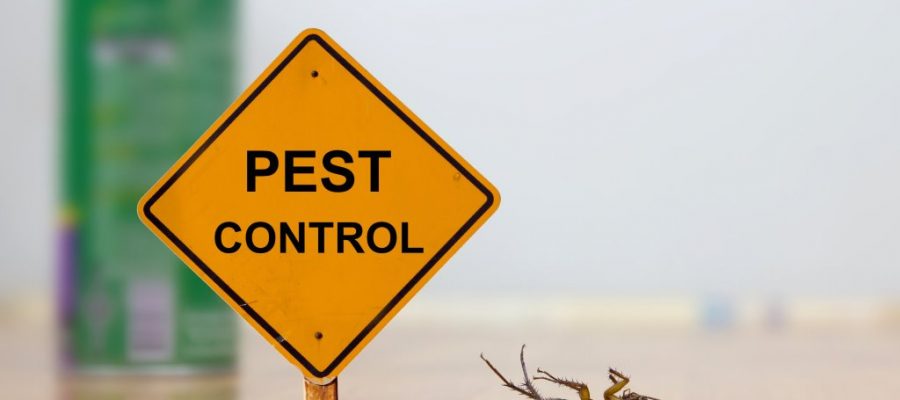Professional Pest Control to keep your home pest-free year-round.
Eco-Friendly Insect Control Approaches for Taking Care Of Wildlife in Urban Areas
Urban locations typically find themselves at the junction of human task and wild animals, leading to one-of-a-kind challenges in parasite administration. These approaches not only shield the setting however likewise improve community involvement in wild animals monitoring. As city populations continue to expand, understanding the dynamics of wild animals communications ends up being progressively essential.
Recognizing Urban Wild Animals Dynamics
Comprehending Urban Wild animals Characteristics is crucial for creating effective and eco-friendly insect control strategies. Urban locations are increasingly coming to be environments for various wildlife varieties, driven by aspects such as habitat fragmentation, food schedule, and human encroachment. Identifying these dynamics enables a nuanced approach to pest administration that aligns with environmental concepts.
Urban wildlife often consists of varieties such as raccoons, squirrels, and birds, which adjust to city settings, discovering particular niches in environment-friendly spaces, parks, and also suburbs. Their presence can cause conflicts with human beings, particularly when they make use of personnels for food and shelter. Comprehending the actions and ecological roles of these types educates strategies that reduce adverse communications while promoting biodiversity.
Additionally, recognizing the interdependencies within city communities aids in recognizing essential areas for habitat conservation and reconstruction. This knowledge contributes to the advancement of incorporated bug monitoring (IPM) strategies that consider the ecological balance, consequently reducing reliance on dangerous chemicals. By cultivating conjunction in between human beings and urban wild animals, cities can develop much healthier environments that benefit both residents and local communities, leading the way for lasting city living.
All-natural Repellents and Deterrents
All-natural repellents and deterrents supply a lasting option to standard bug control techniques by taking advantage of the power of nature to maintain unwanted types away. These environmentally friendly services usually use plant-based ingredients, important oils, and other naturally occurring compounds that discourage insects without harming the environment.
One reliable natural repellent is peppermint oil, which is known to fend off rodents and pests. Its solid scent is unpleasant to numerous pests, making it a popular selection for metropolitan settings. Vinegar and citrus peels can serve as deterrents, as their solid odors are commonly uninviting to various wild animals.
Furthermore, diatomaceous earth is an all-natural powder that can be spread out in areas vulnerable to bug task, efficiently drying out and deterring insects without posing threats to non-target types. Garlic sprays and neem oil are recognized for their capacity to fend off a wide array of pests, consisting of both pests and larger wild animals.
Implementing these all-natural repellents not only minimizes dependence on chemical pesticides but likewise advertises a healthier metropolitan ecosystem, promoting an extra balanced coexistence in between human beings and wild animals. By utilizing these techniques, city areas can successfully take care of pest populations while lessening ecological impact.
Habitat Adjustment Strategies
Effective environment modification techniques play a vital duty in sustainable pest administration by modifying the setting to make it much less conducive to pest infestations. By comprehending the eco-friendly dynamics of urban locations, residential property owners can execute calculated adjustments that prevent bugs while advertising biodiversity.
(Bed Bug Exterminator)One main strategy entails maintaining proper cleanliness. This includes routine waste removal, protecting trash bins, and eliminating standing water to lower reproducing sites for bugs and rats. Furthermore, landscape design methods such as choosing native plants can improve environmental equilibrium, supplying habitats for advantageous microorganisms while lessening sources for pests.
One more crucial method is to secure entrance factors in buildings. Checking and fixing cracks in foundations, walls, and home windows can substantially lower bug gain access to. Additionally, developing physical barriers, such as fencings or plant buffers, can inhibit wild animals movement right into human-inhabited locations.
Integrated Bug Management Practices
Structure upon habitat adjustment techniques, incorporated parasite administration (IPM) practices use a holistic technique to controlling bug populations while minimizing ecological impact. IPM integrates numerous techniques, consisting of biological, cultural, mechanical, and chemical controls, to attain effective bug management.
Biological control includes the intro of natural predators or bloodsuckers to reduce insect populaces. Social practices, such as crop turning and sanitation, interrupt pest life process and diminish their habitats - Pest control service. Mechanical controls, like catches and obstacles, provide instant remedy for parasite pressures without chemical intervention
Chemical controls are used as a last option, concentrating on targeted applications that limit harm to non-target types and the atmosphere. The option of eco-friendly pesticides, when necessary, is important to the IPM structure. In addition, keeping track of bug populaces and examining possible damages aids educate decision-making, ensuring that interventions are prompt and efficient.
Community Participation and Education

(Home Pest Control)Workshops and informative sessions can furnish citizens with understanding regarding indigenous varieties, environment preservation, and efficient non-toxic pest management strategies. Cooperation with colleges, neighborhood companies, and government agencies further boosts instructional outreach, making sure that vital info reaches varied target markets.
Furthermore, community-led initiatives, such as neighborhood clean-up days and environment restoration projects, not just find advertise biodiversity but also reinforce neighborhood ties. Pest control service. By motivating locals to share their experiences and observations, areas can establish targeted strategies that resolve particular local parasite problems
Incorporating responses from locals right into insect management prepares enables a much more responsive and adaptive approach to wild animals challenges. Inevitably, educated and involved communities are vital to accomplishing lasting success in environment-friendly pest control, resulting in healthier metropolitan settings that appreciate both human and ecological needs.

Final Thought
In verdict, green bug control approaches offer lasting options for handling urban wild animals. By focusing on habitat modification, making use of natural repellents, and executing incorporated parasite monitoring practices, communities can cultivate a harmonious conjunction with regional fauna.